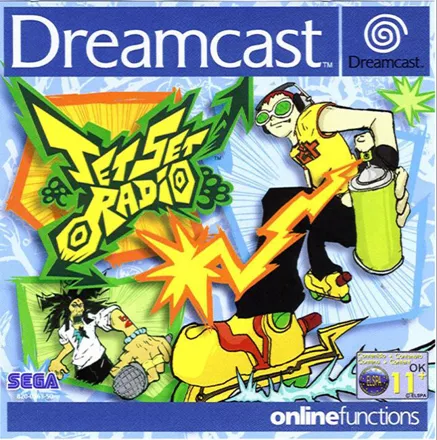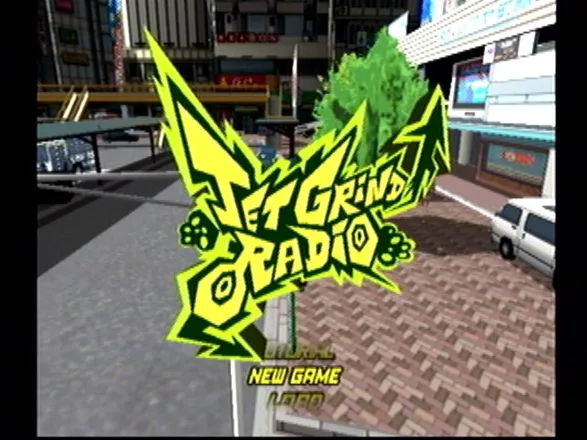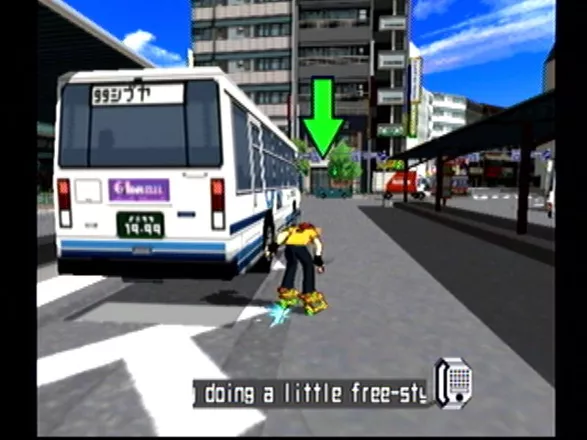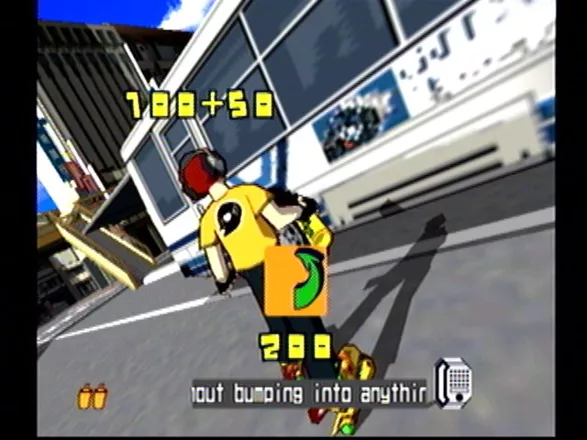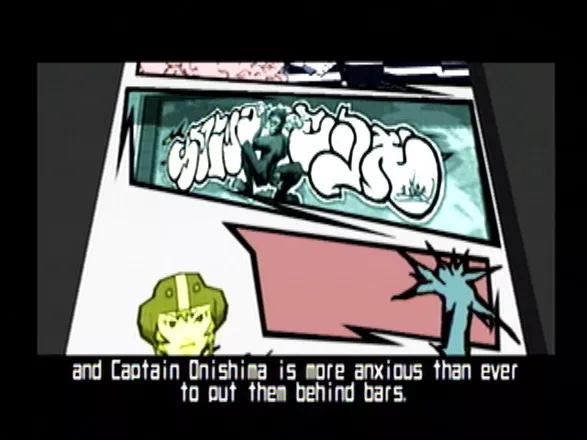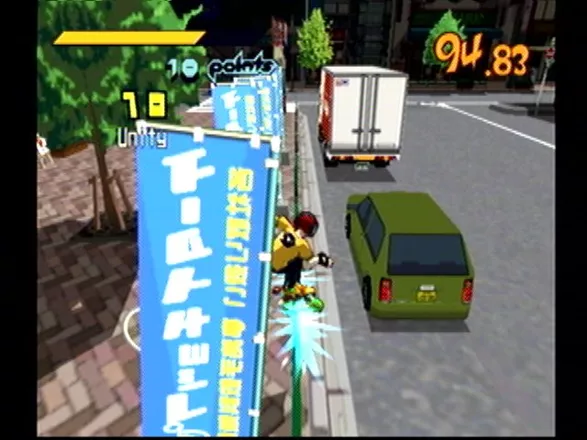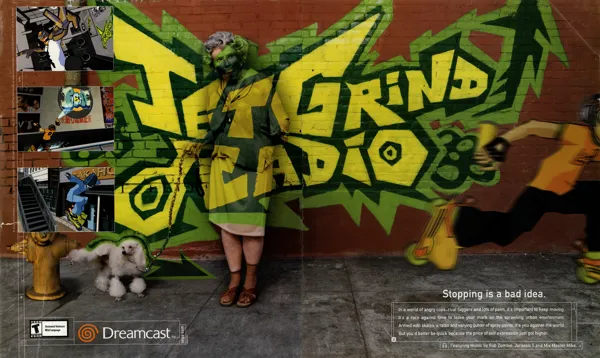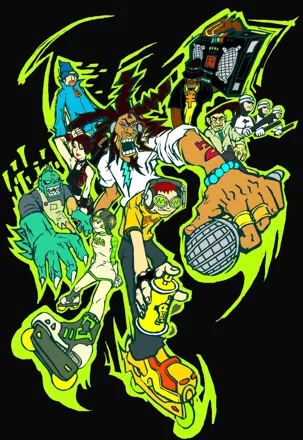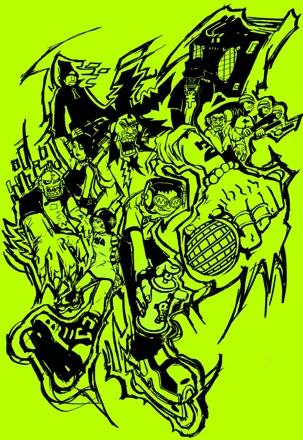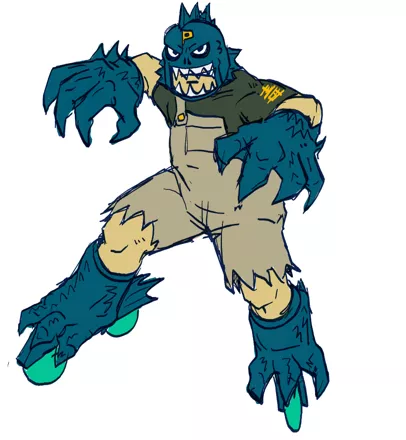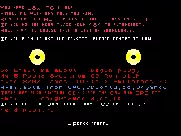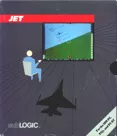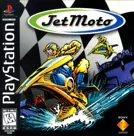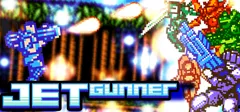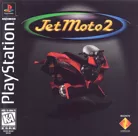Jet Grind Radio
-
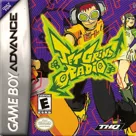 Jet Grind Radio
(2003 on
Game Boy Advance)
Jet Grind Radio
(2003 on
Game Boy Advance)
Description official descriptions
Tokyo-to, a city not unlike Tokyo, somewhere in Asia, in the near future. This is the story about the Grace & Glory (GG's), one of three rival teenage gangs who ride motorised inline skates and are tagging the streets with graffiti. There is a turf war going on between the gangs GG's, the Poison Jam, and the high-tech freaks, the Noise Tanks. The evil Rokkaku Corporation has the corrupt police in their grasp, and, headed by Captain Onishima, the cops are hell-bent on subduing the unruly teen protagonists. But there is light in the darkness: the underground DJ, "Professor K," and his Jet Set Radio station keep tabs on what is happening on the streets of Tokyo-to, and soon our teens will have something much darker than the police to worry about.
As one of the GG's, you skate through a variety of different levels, from busy streets to run-down rooftops and smelly sewers where you learn new moves, collect spray cans, and tag the streets with graffiti. New graffiti designs can be unlocked by finding "Graffiti Souls" in levels, by designing new graffiti yourself, or by going online and downloading any images you find while browsing the internet. Fight the rival gangs "Poison Jam" and the "Noise Tanks", the evil mega-corporation Rokkaku and their police cronies in this fresh take on the platform genre, mixing traditional platform elements with skating similar to that of the Tony Hawk's Pro Skater games. Players are scored on their performance in a level, both on the level of graffiti attempted as well as optional tags and skating tricks. As the game progresses challenge maps open that test the player's ability to do larger tags, more tricks, or race against an opponent.
The American and European release contained two new levels based on New York. The story and order that you meet characters was modified to include these two levels. Both releases also have different unique soundtracks for these levels.
The 2012 HD version has widescreen HD graphics and a new camera system, as well as all the original songs but one.
Spellings
- ジェット セット ラジオ - Japanese spelling
Groups +
Screenshots
Promos
Videos
See any errors or missing info for this game?
You can submit a correction, contribute trivia, add to a game group, add a related site or alternate title.
Credits (Dreamcast version)
138 People (126 developers, 12 thanks) · View all
| Director | |
| Senior Planner | |
| Planner | |
| Chief Programmer | |
| Senior Programmer | |
| Programmer | |
| Chief Graphic Designer | |
| Senior Graphic Designer | |
| Graphic Designer | |
| [ full credits ] | |
Reviews
Critics
Average score: 87% (based on 63 ratings)
Players
Average score: 3.9 out of 5 (based on 103 ratings with 7 reviews)
Gameplay almost as unique as the graphical style
The Good
The tricks are extremely easy to pull off, which actually makes them a little less satisfying. The object of the game is to skate around levels, performing tricks, and spraypainting ("tagging") over the graffiti creations of rival teams. Of course, that'd be too easy on its own, so the keisatsu (police force) are hot on your heels too. There's also the slight problem of rival gangs that you have to chase after every so often.
The graffiti spraying part of the game is done with a Simon-says entry style (think Parappa the Rapper). When you skate up to an area that you can tag (marked by an appropriately colored arrow), a series of arrows appear on-screen. You have to move the analog stick in the right direction to match the arrows, and after a few repeats, the rival teams' tag will be completely covered over with one of your choice (more on that later). Red arrows indicate an area that must be tagged in order to complete the level. Green arrows indicate areas you can tag if you want bonus points.
They're some pretty simple mechanics, with a varied number of skating tricks and environments to keep things interesting - a classic Sega recipe. As a result, Jet Set Radio's gameplay is so simple that it's even a joy to re-play, and is pure gold the first time through.
Another damn fun feature is the tag creator. The game comes with a huge number of great looking tags already, but you can always create your own with the built in editor. People that find this a little lacking in the features department can just as easily use Photoshop, and upload the file to a web server as a JPEG image, because the game can convert images saved to the memory card from the Dreamcast web browser into game textures.
The game runs at a near-constant 30 frames per second. When slowdown occurs, it's usually because of smoke or sprite transparency effects - thankfully this isn't much and rarely affects gameplay. Jet Set's cel-shading technique requires double the polygon count to display characters, due to the fact that they are heavily outlined in black. This means that the developers can't make the character geometry quite as detailed as they otherwise could, so you might sometimes notice a rough edge here and there. It's pure luck that the comic-like visual style of the game soaks this up nicely and if anything, makes the end result more stylish.
This game uses licensed music tracks, which could make it or break it for some. While I didn't find many of the songs especially good, they certainly weren't bad either and seemed to match the feel of the game. You can always turn the Background Music level to zero, if you seriously don't like them. NOTE: The American NTSC version has a few extra licensed music tracks by Rob Zombie, that play over the Grind City level. I have played this version and in my opinion they fit in with the rest of the tracks quite badly. This might be of interest to you if you have access to either version of the game. The voice effects are also good and the characters'll give a cry of "nice!" or "cool!" when you pull off stunts. It's a pity there's no voice-overs for the the cut scenes (which are delivered in real-time, there is no FMV in the game).
The Bad
If there's any faults with this area of the game, the controls could be seen as a little questionable. At times they feel as though they could be more sensitive, and they certainly take some getting used to. Die-hard fans of games such as the Tony Hawk Pro Skater series might also be annoyed at the simplicity of the skating tricks - they're more or less random and you don't get too much control over them, which can make them less satisfying than they could be for some.
There is some polygonal warping and draw-in, but nothing to lose sleep over. Slightly more severe are the shimmering/flickering effects that some of the textures produce. These can be an eyesore but again don't get in the way too much.
The 50hz PAL version is poor. The mentioned anti-aliasing problems are worsened making a very flickery image, although the game isn't as bordered as badly as it might be. This is irrelevant however as Jet Set Radio supports PAL60.
The game's menus aren't too well laid out. After quite a slow boot-up (hampered by a message that reminds you that vandalism isn't cool and crime doesn't pay, yaddayadda), you're presented with a menu screen that gives you the option of New Game, Load Game, and Tutorial. The Tutorial is pretty poor and does nearly nothing but let you skate around the games' Bus Terminal area with a few on-screen prompts, and is fairly useless anyway since selecting New Game gives you a much better set of practice challenges. Once you load a game, you'll get another series of options, presented in a pretty cool way - you press the left and right directional buttons to cycle around different areas in the skate gang's garage hideout. This lets you do stuff like listen to background music, browse the internet to download new tags (if your DC is connected to a phone line), or start a new level. The annoying thing is, if you want to change memory card file, you'll need to reset the whole system over, and that means going through the long, boring bootup sequence. It'd surely have been a better idea to combine these two menu systems into one. Even still, it's hardly worth complaining about.
The Bottom Line
Jet Set Radio is just one of these games that's looked back upon by Dreamcast owners so fondly. When it was released, the relatively new cel-shading technique wowed gamers everywhere, with the grungy urban-style visuals that it rendered. It's a must for every Dreamcast owner. The gameplay is almost as unique as the graphical style, the sound fits the on-screen action perfectly, and the whole style is just so damn cool. So go ahead - paint the town red. Or green.... aquamarine..... orange - what ails ya.
OVERALL: 9/10 (www.lyris.tk)
Dreamcast · by David Mackenzie (47) · 2003
The Good
JGR uses cell shading technology which makes the game's graphics look kind of cartoony, but in a good way. Very smooth animations and cool graffiti. The soundtrack was totally awesome and I loved it. Though it probably doesn't appeal to all. It's a mix of techno and rap. There were also a few hard rock songs thrown in there.
There are a lot of different characters you can use and many different modes of play, which give the game a big replay factor, even if the story is somewhat short. It'll take you a while to find all the different pieces of graffiti. I love the fact that you can go through the storyline again and again.
The Bad
It seemed a bit too short, at least the story part of the game. There was also slowdown and the load times were too long and too often. It's hard to find too much wrong with the gameplay. The last boss was also quite easy.
The sequel (Jet Set Radio Future) will be on Xbox, instead of the canned DC. :-(
The Bottom Line
A wonderful mix of graffiti and roller-blading, and definitely worth the cheap price it's at now. A great game that has been somewhat overlooked.
Dreamcast · by Attila (553) · 2002
Not Quite Tony Hawk, Not Quite Mario Paint, Not Quite Like Anything Else...
The Good
The game itself is quite lengthy and extremely fresh. There is just enough emphasis placed on the skating aspect of the game without distracting from the graffiti. Unlike other skating style games, there isn't too much pressure on the player to pull off tricks - points are awarded for those who do though. As for the graffiti aspect of the game, it is quite unique. Whenever "tagging" on a wall or object, you are prompted with a control stick movement that you need to execute. This almost makes the game feel like a rhythm game. Overall, the levels are well designed and the characters are comical. I strongly recommend this title to any Dreamcast owner and to anyone looking for a wonderfully fun romp.
The Bad
At times the controls can be incredibly frustrating. Jumping from place to place can feel unnatural and speeding up doesn't always feel the same. Also - some frustrating, repetitive jumping challenges await you on the levels where you go against new characters.
The Bottom Line
A hyper-stylized, visual treat with some of the most fun bits to be found in any game from this era.
Dreamcast · by Steve Thompson (87) · 2005
Trivia
1001 Video Games
The Dreamcast version of Jet Set Radio appears in the book 1001 Video Games You Must Play Before You Die by General Editor Tony Mott.
Soundtrack
Sega released a soundtrack for the Japanese version of Jet Set Radio.
Tracks List:
-
- Let Mom Sleep
-
- Humming The Bassline
-
- That's Enough
-
- Everybody Jump Around
-
- Sneakman
-
- Bout The City
-
- Mischievous Boy
-
- Sweet Soul Brother
-
- Rock It On
-
- Yellow Bream
-
- Electric Tooth Brush
-
- Funky Radio
-
- Moody's Shuffle
-
- Grace & Glory
-
- Jet Set Medley
-
- Jet Set Station / Toronto Feat.Dj-K
-
- Jet Set Groove #1
-
- Jet Set Groove #2
Those who preordered the American version of the game received a "Jet Grind Radio Music Sampler" soundtrack CD featuring music by the artists added for the American release of the game. The track listing is: * 1. Rob Zombie - Dragula * 2. Rob Zombie - What Lurks on Channel X * 3. Jurassic 5 - Improvise * 4. Mix Master Mike - Patrol Knob * 5. Cold - Just Got Wicked * 6. Professional Murder Music - Slow * 7. Shuvel - Set It Off * 8. Shuvel - Hit List * 9. Lefty - Girls * 10. Jurassic 5 - Improvise (Instrumental)
Tokyo
The three districts of Tokyo-to are actually the names of real districts of the real city of Tokyo in Japan. They are Benten-cho, Kogane-cho, and Shibuya-cho. The names of the real districts are simply Benten, Kogame, and Shibuya, but the "-cho" suffix can be added, as "-cho" simply means "district" or "area" in Japanese.
Version differences
The original Japanese version, did not contain the levels featuring Cube and Combo (Grind Square was one of these levels). When the game was brought to the USA, the name was changed to Jet Grind Radio and these extra levels were added. Songs from Rob Zombie were also added. Although, during the game, DJ Professor K still refers to the radio station as "Jet Set Radio". The US version of Jet Set Radio got a limited release in Japan as well, called De La Jet Set Radio. This version was released only through the Dreamcast/SEGA Direct system, and is completely in English.
In Europe, the game kept its original title and had the extra levels. It does not have the Rob Zombie songs. It also has some differently translated dialogue from the USA version.
Information also contributed by 雷堂嬢太朗 -raido.jotaro-, David Mackenzie, Opipeuter and Zovni
Analytics
Related Sites +
-
Penny Arcade
Their take on Jet Grind Radio
Identifiers +
Contribute
Are you familiar with this game? Help document and preserve this entry in video game history! If your contribution is approved, you will earn points and be credited as a contributor.
Contributors to this Entry
Game added by Goteki45.
PlayStation 3, Xbox 360, Windows added by Lance Boyle. PS Vita added by Sciere. iPhone, iPad, Android added by Kabushi.
Additional contributors: Trixter, Satoshi Kunsai, Sciere, Foxhack, Keeper Garrett, Patrick Bregger, FatherJack.
Game added May 21, 2001. Last modified April 3, 2025.


